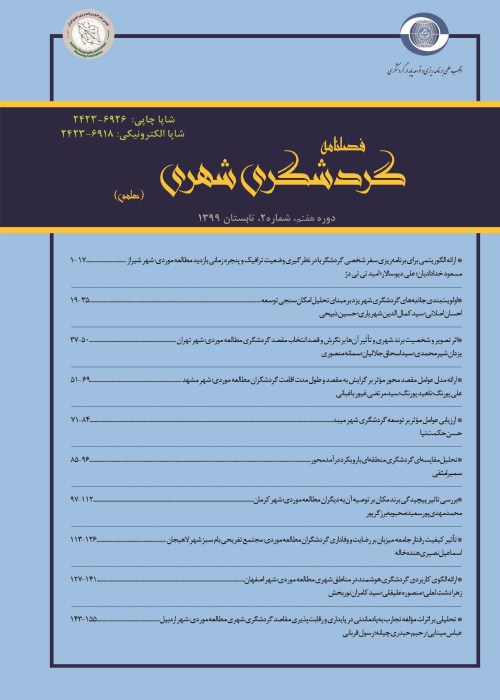Ancestral museums and its role in the development of cultural heritage tourism in historic cities (Case Study Kolbadi house's museum in Sari)
Evaluating the performance of the museum is one of the most important management tasks in museums. The directors are obliged to evaluate the performance of the museum under their management according to the mission, goals and tasks explained to the museums and while constantly monitoring the actions that are going on in the museum. Today, museum management is one of the most important independent aspects in the science of museology, which indicates the knowledge and awareness of a museum's responsibility to society, which in recent years has become one of the main concerns of related organizations and institutions worldwide. Many museums are facing a pattern change. For example, the public budget crisis has forced them to choose new strategies in terms of organization, funding, presentation, and how to organize independently. Therefore, raising awareness, recognizing the tools of the economy, attracting investment and sponsors, improving efficiency, guiding and motivating staff, orienting groups with similar goals, and marketing and monitoring the work of the museum are essential.The performance of museums as one of main heritage tourism attractions, has very important role in attracting tourists. This paper examines the development of cultural heritage tourism, with an emphasis on the museum's function in the historical cities of Sari.
The research is applied in terms of purpose and from the point of view of descriptive-analytical nature. It was conducted in 2017 in order to study the development of cultural heritage tourism with emphasis on the performance of Kalbadi House Museum in the historical city of Sari. The data of the present study have been collected by library and field methods. The library method includes the study of relevant resources for problem solving, theoretical foundations and questionnaire design. Field research also includes the distribution of a researcher-made questionnaire among tourists visiting the Kalbadi Museum. Due to the uncertainty of the statistical population, the Cochran's formula is used to determine the sample size. Based on Cochran's formula, the sample size was 270 people, of which 210 questionnaires were distributed, 210 complete questionnaires were collected and used for analysis. SPSS software was also used for data processing.
The results show that there is no difference between the attitudes of women and men regarding the importance of the development of heritage tourism in the city of Sari. But the attitudes of these two sexes are different about importance of museum performance. Performance of the museum in this research has had a Meaningful effect on the development of cultural heritage tourism in the city of Sari. The beta for the performance of the Kolbadi house's museum featured its contribution (more than 60 percent) to the development of cultural heritage tourism and the importance of museum performance in this area. In this regard, it should be acknowledged that audiences faced a collection of specialized activities in this museum. In fact, the interface between the audiences and silent cultural objects in museums is the museum's performance, which is mainly designed and implemented by a dedicated human resources. The technical performance museum (Beta=.404) also had the most share in the development of the heritage tourism, that reflects the strict observance of the conservation issues in this museum. The service quality criterion (Beta=.076) had less contribution to the development of heritage tourism based on Kolbadi house's museum. This result is also related to the quality and quantity of cultural services provided by the museum and its staff to the tourists.
The Cultural Institutional Museum is a place for storing and displaying objects with the aim of educating and promoting the level of public knowledge, cognition, understanding and awareness. In the field of tourism, museums also play an important role in teaching culture through cultural tourism and heritage. From this approach, museums are a unique cultural place to provide information and cultural attractions related to the region or ethnic group or nation to the audience and tourists and play an important role in the development of heritage tourism. Kalbadi Museum House is one of the unique museums in Mazandaran province, which according to the statistics obtained in this research has a 60% share in the development of cultural heritage tourism in Sari. This situation is related to the collective and integrated presentation of human cultural works to the audience, which can increase their level of satisfaction.
- حق عضویت دریافتی صرف حمایت از نشریات عضو و نگهداری، تکمیل و توسعه مگیران میشود.
- پرداخت حق اشتراک و دانلود مقالات اجازه بازنشر آن در سایر رسانههای چاپی و دیجیتال را به کاربر نمیدهد.


